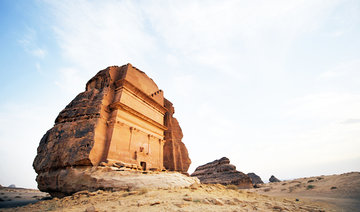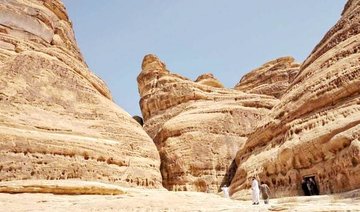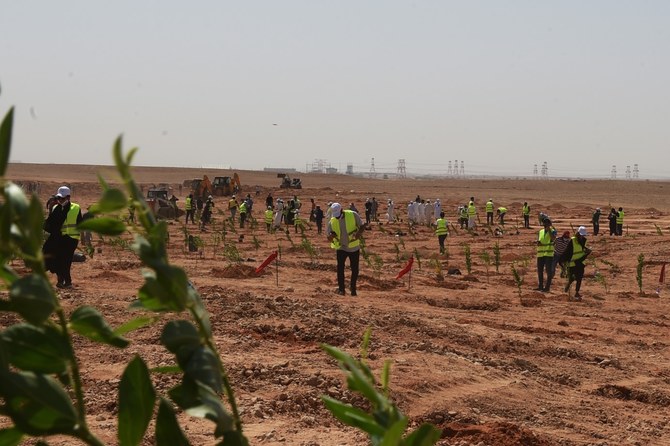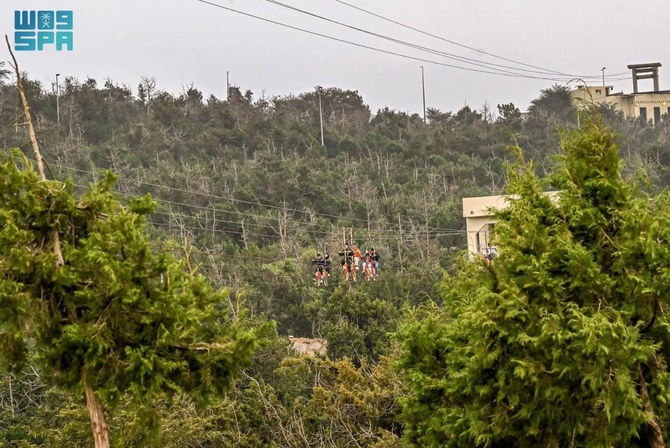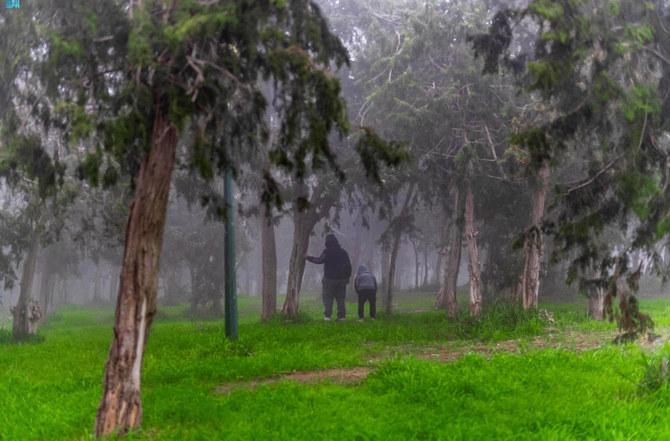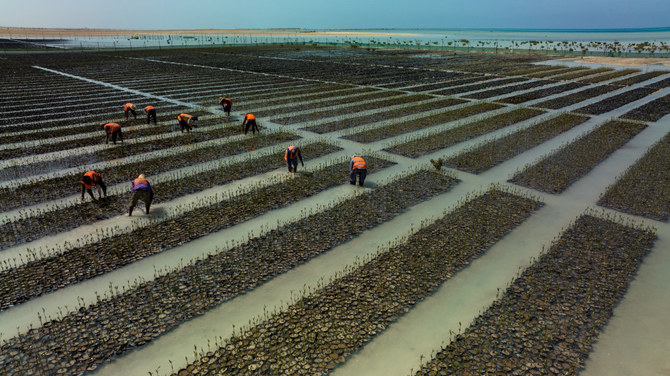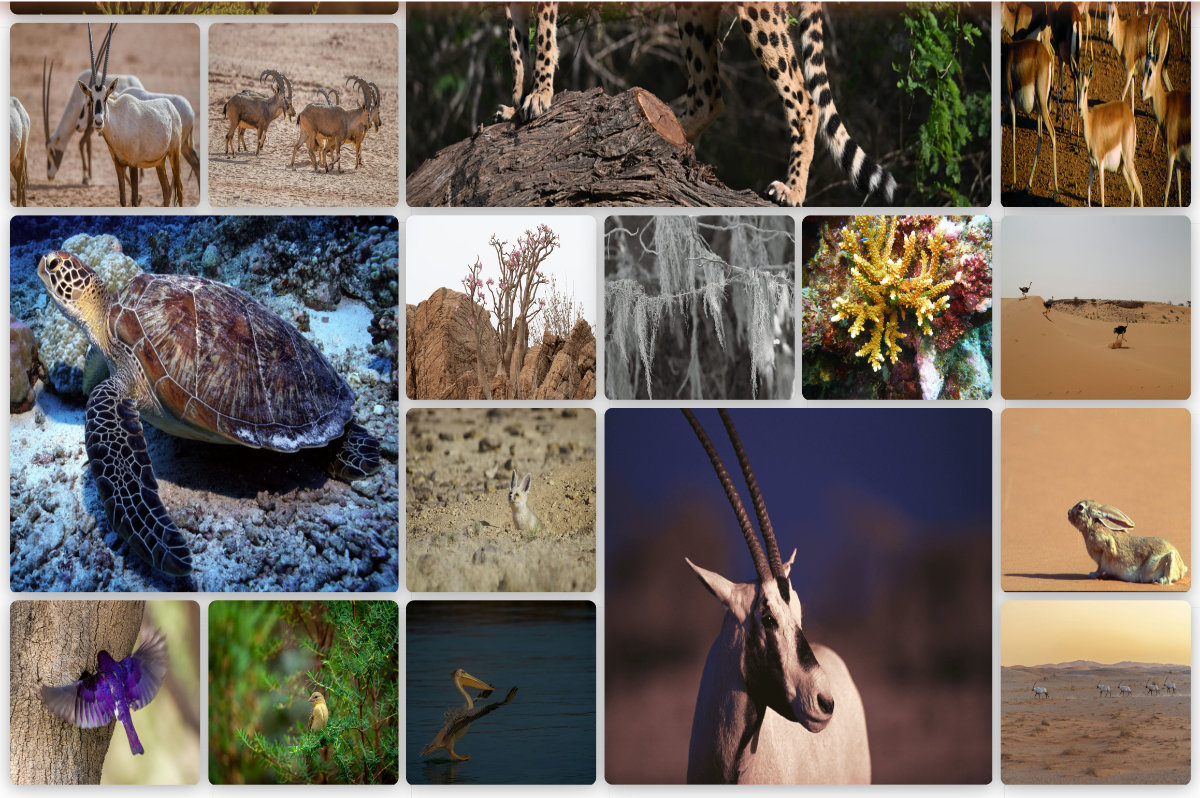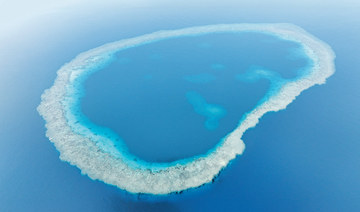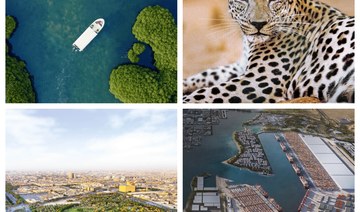PARIS: Five thousand years ago, Al-Ula was as cosmopolitan as they come. For traders and adventurers alike it was an essential stop on the road between the Mediterranean and the Arab world, and far beyond to Asia and Africa.
Now 200 young Saudis are in the vanguard of an ambitious project to bring travelers back to Al-Ula — this time as tourists and lovers of history, eager to explore one of the greatest profusions of cultural treasures to be found anywhere in the world.
Recruited from Al-Ula region, the 200 young people — all high-school leavers or in their first year as university students, and split 50-50 between boys and girls — are in Riyadh being trained in hospitality, learning new languages, studying farming and water technology and swotting up on the cultural, social and natural history of their home region.
There is a great deal of ground to cover — literally as well as figuratively. Al-Ula province covers 22,000 square kilometers of golden sandstone and oases. The region, which is the size of Belgium, is packed with little-known treasures created by ancient civilizations.
The Dadanites, the Lihyanites and Nabateans ruled over Al-Ula. There is ample evidence to show the ancient Greeks and Romans passed through, too. More recently, the Ottoman Turks were a force there.
It is believed that the Prophet Mohammed himself visited the Wadi Al-Qura in Al-Ula valley a few times, both as a child and an adult.
No wonder Al-Ula has been dubbed “an open-air museum,” or that a special royal commission was deemed necessary to oversee the task of bringing it to world attention and developing tourism in the region.
Amr Al-Madani is the chief executive of the Royal Commission on Al-Ula. Which is more important to him — preservation of the archeological sites, or developing tourism?
“The two go together,” he says. “We have to preserve the heritage, both cultural and natural, but we don’t want Al-Ula to be an archaeologists’ club.
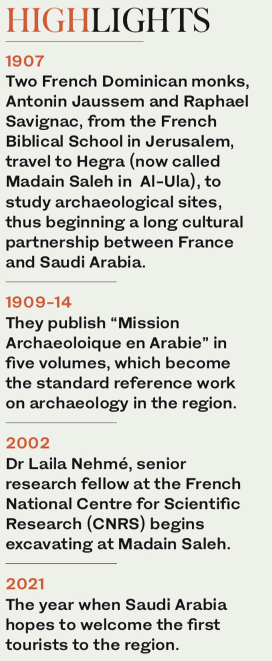 “We are in the lucky position of starting with a blank canvas so we can learn from the mistakes others have made in the past. What has lasted 5,000 years should not be ruined in 50. We are looking at sustainable tourism — both in the sense of respecting nature and also because we want our tourism industry to be long-term.
“We are in the lucky position of starting with a blank canvas so we can learn from the mistakes others have made in the past. What has lasted 5,000 years should not be ruined in 50. We are looking at sustainable tourism — both in the sense of respecting nature and also because we want our tourism industry to be long-term.
“We want to give visitors the best experience we can, balanced against the need to preserve the assets we have. We don’t want to be a case study for someone in the future looking at what went wrong.”
Archaeologists have been working on excavations in Al-Ula for 16 years; now there are drones circling overhead so that the region can be properly mapped out for potential sites for hiking trails and tourism infrastructure.
The aim is to welcome the first tourists in three to five years, with an eventual capacity of 1.5 to 2 million a year “while still maintaining a great level of intimacy with the site,” Al-Madani says.
He points out that Al-Ula was never completely unknown: “Curious tourists have always managed to find their way there; about 20,000 of them each year, mostly expats living in the Kingdom.”
For expert help in redeveloping and restoring Al-Ula, Saudi Arabia has turned to France as one of its partners. It is hard to pin down who approached who first (“We met in the middle,” according to Al-Madani) but the result is a set of agreements between the culture ministries of both countries as well as academic institutions, management consultants and heritage organisations.
“France is one of the most visited countries in the world. When you look at heritage sites like Nimes or Avignon in the south of France, it is clear the culture of preservation is driven by the lifestyle,” said Al-Madani. “France is also the headquarters of Unesco and other heritage bodies.”
The triumph of the co-operation between the Louvre museum in Paris and the recently opened offshoot in Abu Dhabi was also a factor, he acknowledged.
“After exporting their expertise so successfully, they were keen to repeat the experience.”
Al-Ula already has one Unesco World Heritage site in the ancient city of Madain Saleh, which dates from at least 2,000 BC and was conquered by the Romans in the early 2nd century AD, becoming the most southerly point in the Roman Empire. The city was second only to Petra in Jordan as a place for the elite to bury their dead.
The existing settlements of Al-Ula, Al-Atheeb and Moghairah can already cater for visitors but are ripe for immediate development. They also offer access to only 2,000 square kilometres, a fraction of Al-Ula’s total area. 
“There are also some nice hideaway resorts. It is possible to stay in Al-Ula in comfort already, but a hotel is much more than just a bed,” said Al-Madani. “We need better gastronomy and we intend to recruit chefs from all over the world. We need nightlife, performance, art, night walks. We don’t want to simply meet standards, we want to elevate them and set them for others to follow.”
A local airport opened four years ago and there are good roads; but improving public transport is another part of the project, along with linking up with plans for holiday resorts on the Red Sea, so visitors can spend time exploring the historic sites and follow up with a few days on the beach. The potential openings for anyone with the required skills, or the motivation to acquire them, seem almost limitless — a fact not lost on the young people of Al-Ula province. More than 2,100 people out of a local population of 70,000 applied for those 200 traineeships.
The chosen candidates will spend three to six months at college in Riyadh while careers advisers and psychologists assess their abilities and where they might be best applied.
“Then they will be sent out into the world, to improve their languages, to learn how to be independent,” said Al Madani.
Young girls and boys sent out into the world to be independent? It is not the picture most outsiders have of Saudi Arabia. The change in perception, the big plans, the breath-taking ambition of Vision 2030, all emanate from the country’s youthful crown prince.
“This is a new era for Saudi Arabia and it all comes from him,” said Al-Madani. The Al-Ula project, too? “Eveything.”
A graduate of Harvard Business School, Al-Madani has 15 years’ experience in discovering and nurturing innovation. He is also a former chief executive of the General Entertainment Authority, the body charged with bringing cinema, live performances and sporting events back to the Kingdom.
But he talks about Al-Ula with such zeal that Amr Al-Madani truly gives the impression that he believes he has the best job in town — any town.
Certainly, re-introducing Al-Ula to the world is a bigger task than introducing the world to Al-Ula.
“Many centuries ago,” Al-Madani says, “Al-Ula was already used to seeing people from all over; Al Ula was global long, long ago.”
* * * * * * *
TOUR GUIDE
Arab News has seen many of the wonders of Al-Ula at first hand — from the air. We took a helicopter flight last year with the Australian archaeologist David Kennedy, who had been using Google Earth for years to explore Saudi Arabia’s vast desert plains.
“Seeing it from 500 feet is so much better,” he told Arab News, as he hung from the helicopter door while wearing a harness suit, with a camera in his hands.
There are 400 stone gates — thought to be used for trapping animals — and graves scattered across the lava fields known as Harrat Khaybar and Harrat Uwayrid.
“I’ve seen lava fields before and plenty of graves, but I’ve never seen ones like these. Absolutely amazing,” Kennedy said.
There are “so many wonderful sites. When we go back after refueling we’ll visit the best place,” he said — Harrat Uwayrid. “The graves in this lava field are overlapping, which is very unusual.”
In 2008, Abdullah Al-Saeed, a Saudi doctor, wrote to Kennedy asking him to check out sites in the Kingdom that he had spotted on Google Earth.
“I was stunned because I hadn’t thought of looking up Saudi Arabia before, as I thought the quality of the imagery for most of the Middle East was poor,” said Kennedy.
He described the images he found as “absolutely astonishing,” similar to sites he had seen in Jordan but with different designs. “So most people with the same idea executing it in a different way,” is how he described it. Kennedy and Al-Saeed co-wrote an article about it for Saudi Aramco World Magazine.
“There’s just so much there. I’ve been used to the lava field in Jordan, which is very rich, but Harrat Khaybar I think is richer. It’s an absolutely wonderful place.”
- Aisha Fareed, Riyadh






